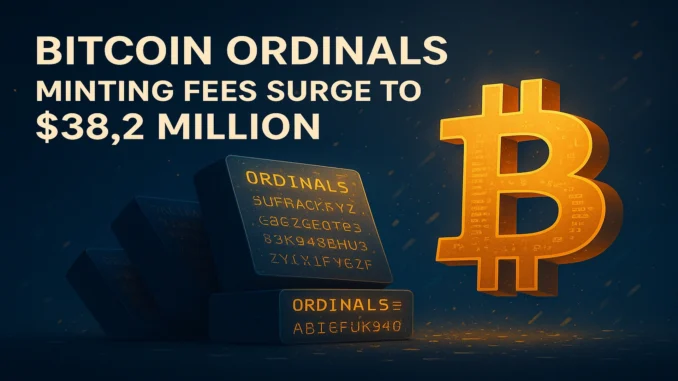
Bitcoin Ordinals Fees Climb to $38.2 Million
According to a report compiled by Dune Analytics contributor @dgtl_assets, the total network fees paid for minting Bitcoin Ordinals reached 1,414 BTC ($38.2 million) on May 20. This marks a 700% increase compared to April 20 and an 831% increase since April 1.
Despite sustained enthusiasm for Bitcoin-based NFTs, recent data shows a sharp shift toward text-based inscriptions, replacing the earlier mix of text and image inscriptions that dominated between February and April.
What Are Bitcoin Ordinals?
As explained by cross-chain wallet BitKeep, Bitcoin Ordinals operate through a unique numbering system that assigns a specific identifier to each Satoshi—the smallest unit of Bitcoin. This enables individual tracking and transfer of every Satoshi.
By combining Ordinals with the Inscription process, users can embed extra layers of data directly onto the Bitcoin blockchain. This allows them to mint digital artifacts such as images, videos, or text without relying on off-chain storage or smart contracts.
Unlike traditional NFTs hosted on platforms like IPFS, Ordinals exist entirely within the Bitcoin blockchain, providing full on-chain permanence without external dependencies.
From Theory to BRC-20 Tokens
The Ordinals ecosystem began in January 2023, when Web3 developer Casey Rodarmor released the Ordinal Theory framework. Building on that foundation, another developer known as domo introduced the BRC-20 token standard in March 2023.
BRC-20 uses Ordinals and Inscriptions to create and manage fungible tokens on Bitcoin, including contracts for token minting and transfers.
Since then, over 8 million Bitcoin Ordinals have been created, alongside 24,677 BRC-20 tokens with a combined market capitalization exceeding $612 million.
Exchanges Begin Listing BRC-20 Tokens
On May 20, cryptocurrency exchange OKX listed the ORDI token, the first and most prominent BRC-20 token. ORDI currently leads the category with a market capitalization of over $300 million, signaling strong market confidence in Bitcoin’s emerging NFT and token economy.
As activity around Ordinals and BRC-20 tokens accelerates, Bitcoin continues to evolve beyond its traditional role as digital gold into a broader foundation for Web3 innovation.




